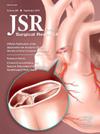Characteristics of Pediatric Urology Patients With Same-Day Surgery Cancellations: Who Is at Risk?
IF 1.8
3区 医学
Q2 SURGERY
引用次数: 0
Abstract
Introduction
Day-of-surgery cancellations (DOSC) negatively impact patients, health-care providers, and systems. We assessed whether patient demographics, level of community disadvantage, and travel distance are associated with DOSC.
Methods
We retrospectively reviewed all elective outpatient urology surgery from January 2021 to June 2023. We collected patients' demographics, travel distance, diagnosis, and level of community disadvantage using the Area Deprivation Index (ADI). Patients with and without DOSC were compared.
Results
Of 516 scheduled surgeries, 26 cases (5.0%) were DOSC. One patient had two DOSC. Children with completed and canceled surgeries were similar in age (2.85 versus 1.89 ys, P = 0.71). Reasons for DOSC included: medical problem (9/26; 34.6%), no longer desired surgery (4/26; 15.4%), needed more information (2/26; 7.7%); confused about logistics (2/26; 7.7%); did not arrive (7/26; 26.9%); insufficient fasting (2/26; 7.7%). Patients using a language other than English for care were equally likely to cancel compared to patients who spoke English (5.9% versus 5.0%, adjusted odds ratio [OR] = 2.06, 95% confidence interval [CI]: 0.53-7.98; P = 0.29). Children living in most disadvantaged areas (ADI 9-10) and children living in the least disadvantaged areas (ADI 1-2) were equally likely to have surgery canceled, though 6.1% of patients with DOSC lived in ADI 9-10, and no children living in ADI 1-2 canceled. Compared with White non-Hispanic patients (10/226 [4.4%] DOSC), Black patients had similar DOSC (2/14 [14.3%], adjusted OR = 2.91, 95% CI: 0.55-15.36, P = 0.26), though Hispanic patients had a lower likelihood of DOSC (6/190 [3.2%], adjusted OR = 0.45, 95% CI: 0.13-1.54, P = 0.02). The likelihood of DOSC was similar for patients living more than 45 miles away (3.9% [10/258]) compared with those living within 20 miles (14/214 [6.5%]; adjusted OR = 0.49, 95% CI: 0.2-1.19, P = 0.51).
Conclusions
Patients living further away or speaking languages other than English are not more likely to have DOSC. Further investigation may identify patient- and community-specific factors influencing DOSC.
求助全文
约1分钟内获得全文
求助全文
来源期刊
CiteScore
3.90
自引率
4.50%
发文量
627
审稿时长
138 days
期刊介绍:
The Journal of Surgical Research: Clinical and Laboratory Investigation publishes original articles concerned with clinical and laboratory investigations relevant to surgical practice and teaching. The journal emphasizes reports of clinical investigations or fundamental research bearing directly on surgical management that will be of general interest to a broad range of surgeons and surgical researchers. The articles presented need not have been the products of surgeons or of surgical laboratories.
The Journal of Surgical Research also features review articles and special articles relating to educational, research, or social issues of interest to the academic surgical community.

 求助内容:
求助内容: 应助结果提醒方式:
应助结果提醒方式:


